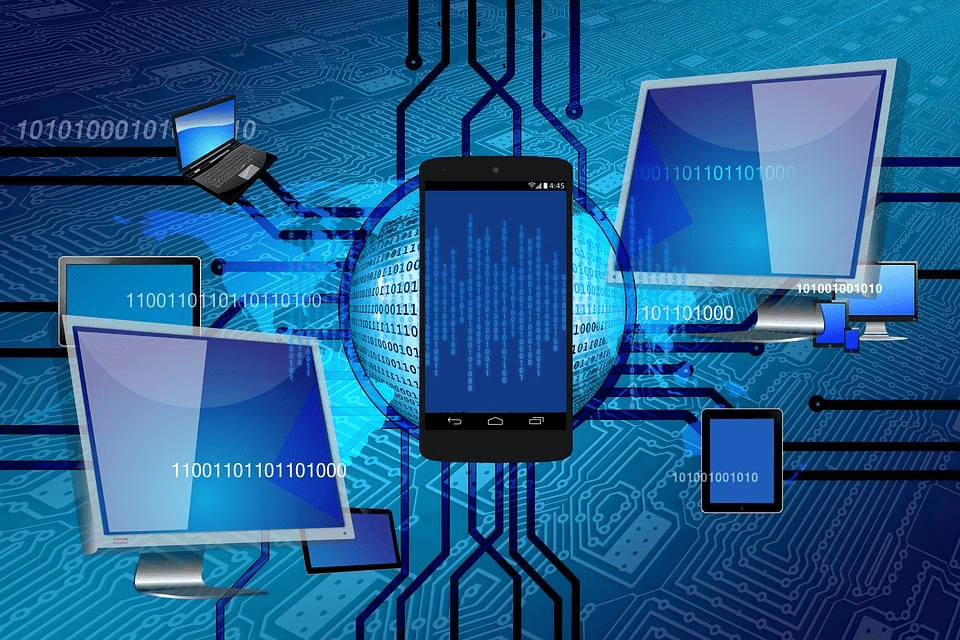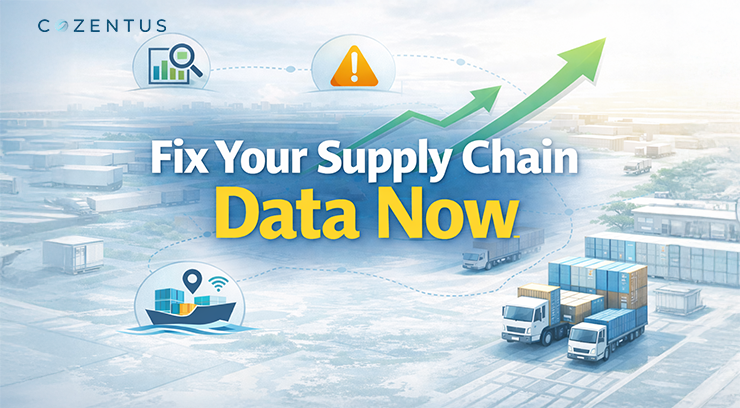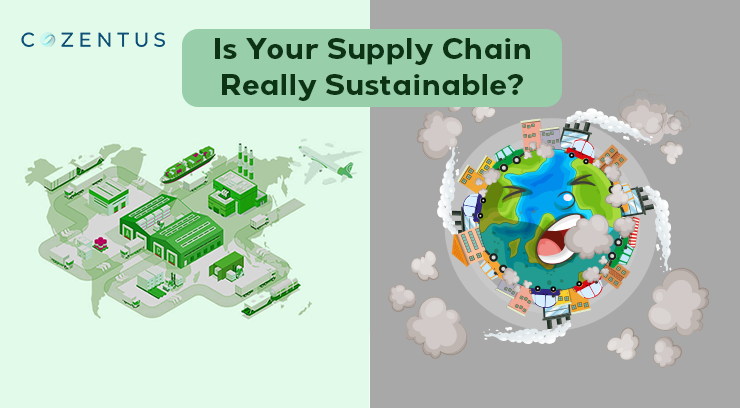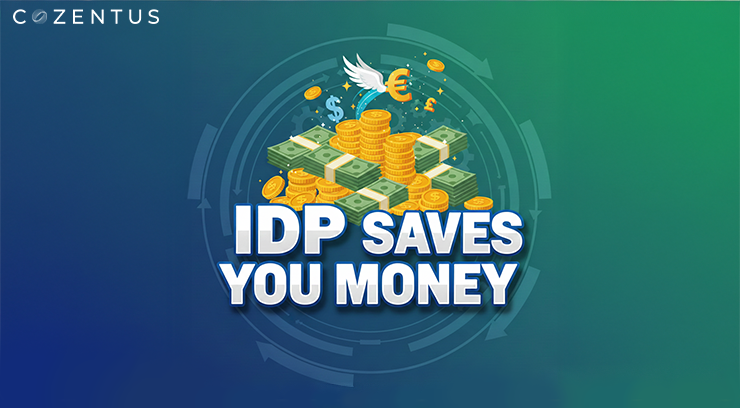Communication networks have always been the key to effective commerce, and Electronic Data Interchange (EDI) is the foundation that assures any organization's solid trade connections. To govern an organization's whole data interchange, EDI is a system that optimizes data exchange and administration. However, as security technology becomes more complicated, EDI communication becomes more difficult to control. Here is Cozentus' guide on the future of EDI in business.
What exactly is EDI technology?
In its most basic form, EDI (Electronic Data Interchange) technology enables the computer-to-computer interchange of business documents in a common electronic format between multiple business partners. Moving to an EDI platform that specializes in EDI integration has many advantages, including:
- Cost savings
- Workflow automation
- Document transmission and transformation are now much faster.
- Fewer mistakes
- Improved interactions with partners and consumers.
EDI transactions include vital information for business interactions, and EDI order processing is a common example of an EDI in operation.
Future EDI Integration Trends Enterprises must continue to invest in updating B2B integration software to compete in the digital economy.
Let us look at four factors that will influence the future of EDI providers and EDI integration.
- IT Skills Scarcity
- E-commerce Development
- Integration of Business Systems
- Blockchain Technology Advancement
Cozentus examined each one individually:
IT Skills Scarcity
Cloud computing is altering the rules for adopting EDI technology and service consumption patterns. More companies are considering moving apps, connectivity, data, and integration to the cloud. Cloud EDI includes. However, as cloud computing has expanded to unprecedented proportions, the need for skilled people inside an IT department has never been greater.
According to the London School of Economics, a lack of cloud skills costs firms $258 million yearly. Cloud computing intends to provide elasticity, flexibility, and cost savings. Still, without the proper internal resources to handle cloud migration, cloud service adoption, or a cloud-first IT strategy, the enterprise is unlikely to modernize critical EDI operations to the cloud without incident.
When IT organizations suffer a skills shortage, one frequent option many have taken is outsourcing. Collaboration with an external IT service provider may decrease expenses and overhead while providing 24/7 coverage that an understaffed or under-skilled IT or integration competence center cannot. Because the EDI integration competence has been outsourced, integration ability is no longer an internal need. This will improve the dependability of digital business transactions while also giving you control over the support and services you need to guarantee a smooth migration and upkeep.
E-commerce Development
E-commerce is, without a doubt, the retail sector's fastest-growing segment. Nowadays, almost everyone does their shopping online. E-commerce is too enticing for traditional brick-and-mortar businesses to pass up, if not for unfathomable riches, at least as an emergency lifeboat. Between the increasingly disruptive Amazon effect and headline-making, paradigm-shifting retail acquisitions, the e-commerce revolution continues to influence a wide range of businesses profoundly.
A new obstacle emerges as the market's e-commerce boom continues at breakneck speed. And that problem is centered on the ever-increasing complexity of data and the sheer amount of data generated by e-commerce business operations. Because an e-commerce business model depends on various technologies, ranging from supply chain management solutions to application, data, and B2B integration capabilities, the result is a very complicated environment.
The makeup of e-commerce supply chain data is intriguing. Customers, partners, and merchants provide data in a variety of formats. The problem that businesses confront is data access, integration, and management. That is why a contemporary B2B infrastructure strategy is more crucial than ever and should not be underestimated or taken lightly by businesses. Organizations with a shaky hold on their present data need to understand the looming complexity. Existing technology is often more reliable and should be explored first for addressing new and impending e-commerce concerns.
EDI is a core technology for integrating ecosystems and ensuring the smooth supply chain flow, inventory, and retail data. EDI continues to function as the present communications standard for most industry-specific supply chains.
Integration of Business Systems
Modern EDI provides several capabilities and advantages in and around corporate system integration.
Among the advantages of current EDI are:
- The transformation from one format to another, data mapping, and integration
- Intelligent automation requires action orchestration.
- Transactional capabilities include asynchronous, synchronous, and real-time transactions.
- Capabilities for visibility and analytics that support operational and business intelligence use cases
- Integration possibilities for on-premise and cloud apps, systems, data, and partners are extensive.
Consider the following example of digital modernization to demonstrate the significance of business process integration:
Businesses nowadays need the capacity to undertake business system integration rapidly and effectively to boost company agility. As a result, many companies are upgrading and modernizing enterprise resource planning (ERP) software to do business with more flexibility and dependability. However, ERP cloud migration is hard, expensive, and hazardous without a guiding plan incorporating business system integration. That's where EDI, or current EDI, comes in.
EDI must coordinate with connected business endpoints with ERP systems and other enterprise-wide core business applications. EDI is responsible for connecting data, applications, trade partners, and the underlying revenue-generating business processes. EDI offers a comprehensive toolkit to assure business process integration across all back-office systems, from the corporate finance solution to your customer relationship management (CRM) software.
Blockchain Technology Advancement
Every few years, the newest and best technology comes, and everyone declares that it will replace EDI. It used to be XML. It was APIs a few years ago.
Now?
Here comes blockchain. Even Gartner admits that industry excitement has propelled blockchain to a fever pitch before it is ready for most enterprises.
The fact is that, although blockchain is useful for some sorts of transactions, it will not replace all B2B transactional technologies. If anything, blockchain technology will serve to supplement and complement current EDI systems.
Consequently, how businesses now conduct B2B transactions does not have to alter substantially. In reality, it may continue to work like before, although blockchain can offer enhanced visibility amongst three parties, making EDI a more powerful technology.
EDI and XML accounted for roughly 88-95 percent of all B2B transaction volumes in 2019. While blockchain is a disruptive force, EDI remains engrained in regular business transactions across all industries, making EDI a logical fit as a component in any B2B integration technology stack.
Wrapping Up
Suppose your existing integration strategy does not allow end-to-end EDI integration. In that case, you should adopt a contemporary integration platform that converts an EDI document and inserts it into your back-end system to complete the B2B transaction's lifecycle. Having EDI and API on the same platform allows you to exploit integration to benefit your business ecosystem, not just your firm. Otherwise, measures you may make to improve B2B integration at your firm will cover in Cozentus future posts.
Recent Post
Subscribe to our newsletter
Stay updated on latest trends and news in the supply chain and logistics industry








